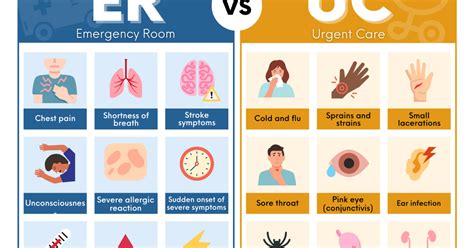When you or a loved one is in need of urgent medical attention, the last thing you want is to spend hours waiting in an emergency room. While emergency rooms are designed to prioritize patients based on the severity of their conditions, there are several steps you can take to potentially reduce your wait time and receive faster care. Here are 12+ emergency room tips to help you navigate the system more efficiently:
1. Know When to Go
Understanding what constitutes an emergency is crucial. Conditions like chest pain, severe injuries, difficulty breathing, or severe bleeding require immediate attention. For less severe conditions, consider visiting an urgent care center. Knowing when to go to the emergency room can save you time and ensure that those with critical needs are prioritized.
2. Choose the Right Emergency Room
If possible, choose an emergency room that is known for shorter wait times. Some hospitals provide wait time estimates on their websites or through mobile apps. Additionally, consider the location and the time of day. Avoid peak hours or times when the emergency room might be particularly busy, such as during flu season.
3. Be Prepared
Before you arrive, gather all relevant medical information. This includes a list of your medications, any allergies, your medical history, and contact information for your primary care physician. Having this information readily available can speed up the registration and assessment process.
4. Use Online Check-In
Many emergency rooms now offer online check-in or telehealth services for non-life-threatening conditions. This can significantly reduce your wait time and allow you to receive initial assessments from the comfort of your own home.
5. Understand the Triage Process
Emergency rooms use a triage system to prioritize patients. The most critical cases are seen first. Understanding that the triage nurse’s assessment determines the order in which patients are seen can help manage expectations.
6. Be Honest and Detailed
When explaining your symptoms to the triage nurse or doctor, be as honest and detailed as possible. This information is crucial for determining the urgency of your condition and the appropriate course of treatment.
7. Bring a Support Person
Having someone with you can provide emotional support and help you remember questions to ask the medical staff. They can also assist in providing your medical history or helping you understand the treatment plan.
8. Ask Questions
Don’t hesitate to ask questions about your treatment, including what to expect, potential side effects of medications, and follow-up care instructions. Asking questions can help you better understand your condition and the care you’re receiving.
9. Follow Up
After your emergency room visit, make sure to follow up with your primary care physician, especially if you were advised to do so. This can help ensure that your condition is monitored and that any necessary further treatment is provided.
10. Stay Calm and Patient
It’s natural to feel anxious or stressed in an emergency situation. However, remaining calm and patient can help you think more clearly and make better decisions about your care.
11. Understand Your Insurance
Knowing what your insurance covers and any out-of-pocket costs associated with emergency room visits can reduce financial stress. Check your policy to understand what is covered and what you might need to pay.
12. Consider a Virtual Emergency Room Visit
For certain conditions, virtual emergency room visits can provide quick access to medical care from the comfort of your home. This can be particularly useful for follow-up care, non-urgent conditions, or when physical presence in an emergency room is not necessary.
Additional Tips
- Keep a list of emergency contacts handy, including your primary care physician and any specialists you see.
- Know your rights as a patient, including the right to refuse treatment and to have a support person with you.
- Bring any relevant medical equipment you use, such as an inhaler or insulin pump, to the emergency room.
- Stay hydrated and fed if your condition allows, as waiting can sometimes take longer than expected.
- Be respectful and courteous to the emergency room staff. They are working to provide the best care possible under often stressful conditions.
By following these tips, you can potentially reduce your wait time and ensure you receive the care you need as efficiently as possible. Remember, the emergency room is for emergencies, so using it appropriately and being prepared can make a significant difference in your experience.
What should I do if I'm unsure whether my condition is an emergency?
+If you're unsure, it's always best to err on the side of caution and seek medical attention. You can start by contacting your primary care physician or reaching out to a telehealth service for an initial assessment. If your condition worsens or you experience severe symptoms, go to the emergency room or call emergency services.
Can I request a specific doctor in the emergency room?
+While you can request a specific doctor, the emergency room operates on a triage system and sees patients based on the severity of their conditions. The staff will assign a doctor based on availability and specialty. However, if you have a preference, it's worth asking, especially if you're seeing a specialist or have a unique condition that requires specific care.
What information should I have ready when I arrive at the emergency room?
+Have your insurance cards, identification, a list of your medications, any allergies, and your medical history ready. If you have any relevant medical records or test results, bring those as well. Having this information readily available can help streamline the registration and assessment process.
In conclusion, while wait times in emergency rooms can be unpredictable, being prepared, understanding the system, and knowing how to navigate it can make a significant difference. By following these tips and staying informed, you can ensure that you receive the best possible care when you need it most.



